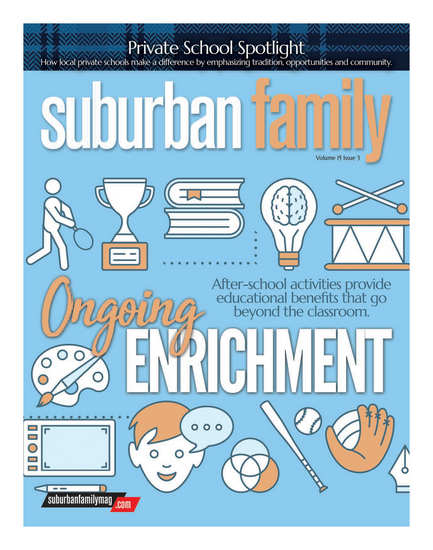
THE AFFORDABILITY OF HIGHER EDUCATION IS A VERY IMPORTANT ISSUE IN THE ACADEMIC WORLD IN GENERAL, but it’s one that Georgian Court University (GCU) takes personally. With 51 percent of the last graduating class being eligible for a PELL Grant, which is limited to students with financial need, it’s clear that many of the students who attend Georgian Court might not be able to do so without support.
Joseph R. Marbach, Ph.D., president of the university, admits that helping students understand and achieve affordability sometimes comes with some “hand-holding.” Walking students through the potentially complicated process of applying for grants and assistance can take a lot of one-on-one work. But that’s what they’re willing to do in order to help get students the support they need. With a student to faculty ratio of 12:1, it’s also a reality that’s possible.
Before graduating, students are paired with mentors—often occurring organically, but sometimes through a conscious effort—which provides a person to “check-in with” as they navigate their time spent in higher education. Justin G. Roy, Georgian Court University Dean of Admissions, says that these mentors can be separate from faculty advisors, who are mostly advising on students’ majors. Instead, a mentor is someone who is there to answer questions or even just be a sounding board.
Creating Opportunities
Georgian Court’s statistics show that students are getting opportunities that the family members before them did not have.
“Of our graduating class, 48 percent were the first in their family to go to college,” says Dr. Marbach. “We’re supporting first-generation, new students. We’re the new ‘Ellis Island’ in that we’re helping support the American dream.”
The university offers more than $12 million in scholarships on top of additional aid each year thanks to both donors and alumni support. SAT scores are up, more and more well-prepared students are applying for admission and retention—the percentage of students who return each year—is climbing.
Still, GCU’s students have financial needs.
“Our scholarships and foundations, many of which were created by friends and alumni, are so important to our students,” says Roy. “While we often talk about our first-generation students, that support is important to all of our students—across the board. It can be the difference between a student getting their books and not getting their books for a semester.”
Last year, GCU was the only college to freeze tuition as one means of addressing rising costs. Being innovative in the face of problems is something that the school has always done well. Problem solving was the catalyst behind the university’s “Chart the Course” program, which offers a free, three-credit course during the winter or summer break to help keep students on track for graduation. Courses are even offered online for those who don’t live near campus.
“We found that earning 30 college credits in the first year was a good indicator of whether a student would go on to earn a degree,” explains Roy. “But whether it was because they purposely took a light load in their first semester to adjust to college or something happened in their life, we found that some of our students were not earning those 30 credits—and that put them at a lower retention rate.”
“It’s all part of our ‘student first’ mentality that we really embrace here,” Roy says. “It’s just part of our culture—and it’s what I personally love about Georgian Court.”
Supporting Their Future
Roy says that faculty members are ultimately focused on students’ futures. After all, the four years spent at Georgian Court are really all about preparing students for their careers or further study.
For Stephanie Nagy, a recent nursing graduate, her career goal had always been focused on being a nurse in the Neonatal ICU. Having been born three months premature herself, it has been a personal mission to help others in the way that the medical field helped her. But Nagy says that without the scholarships she was awarded, that dream might not have become a reality.
As part of the GIST program (Girls Involved in Science and Technology), Nagy has spoken to other high school girls who have dreams like hers. She says there’s nothing quite like seeing that “spark in their eye” when she would help them to realize that college can be affordable and therefore a realistic dream for them to hold.
“In thanks to the GIST program, we have been able to inspire them, provide them support, get them engaged in learning, and watch them spread their wings and realize they can go as far as they dream if they feel supported to fly,” Nagy said in a speech she recently gave.
Roy says it’s not uncommon for dreams to come full circle like they did for Nagy. As students receive support—personally, academically and financially— he encourages them to remember the help they once received and pay it forward however they can.
As Nagy made her speech toward the end of her senior year in 2016, she thanked those who helped give her the support she needed to “spread her own wings and fly.” She says that without that support she never could have made her dreams come true.
Published (and copyrighted) in Suburban Family Magazine, Volume 8, Issue 6 (August, 2017).
For more info on Suburban Family Magazine, click here.
For information about advertising in Suburban Family Magazine, click here.
To find out where to pick up your copy of Suburban Family Magazine, click here.




